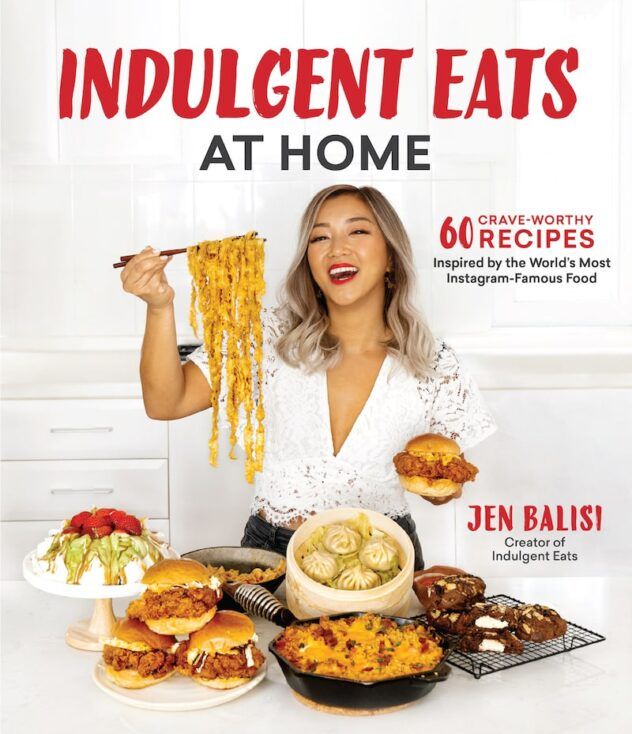Food blogger Jen Balisi, aka @IndulgentEats, talks to Tatler about her new cookbook, viral recipes, her Filipino-American identity, and showing the “unfiltered” side of recipe development online
Boasting over 365k followers on Instagram, Jen Balisi—better known as @IndulgentEats on Instagram—has been busy. The social media food blogger has been steadily creating content for her account, while also preparing for her first cookbook launch, Indulgent Eats at Home, for February 2022.
On top of everything, she’s also been popping up across Hong Kong’s hippest restaurants in the last few months, bringing recipes from her cookbook to life. In October, Balisi collaborated with Kennedy Town’s neighbourhood pizza joint, Alvy’s, creating a birria and bone marrow quesotaco, lobster mac and cheese, and a cheeseburger pizza inspired by one of her burger recipes. In early November, she headed to HATCH to share her cheesy pork and plantain empanadas, as well as hosting a full five-course dinner featuring recipes from different chapters of her book. She also served her East Meets West Coast Burger (which comes with two beef patties, gochujang mayo and a crispy cheddar cheese skirt) at her latest pop-up at Honbo Wan Chai in late November, with more pop up locations to come in the upcoming months.
Here, we talk to Jen about her journey as a food blogger, her recipe writing process, how her identity as a Filipino-American shows up in the cookbook, and showing the “unfiltered” side of cooking online.
Don't miss: Where Chefs Are Excited to Eat in Hong Kong: November 2021

Tell us about yourself.
I'm a full-time food and travel content creator and recipe developer. I moved to Hong Kong over four years ago after living in NYC for 10 years, where I was originally a marketing manager at American Express.
How did @IndulgentEats begin?
I originally started it as a blog because I found myself having a lot of free time once I started working a full-time marketing manager job at American Express in NYC, and my growing salary allowed me to dine out and travel more. I was documenting all of these experiences and also teaching myself how to cook for fun. I would promote my blog posts on my personal Instagram account, and as I gained followers, I eventually created a food-specific IG because at the time, I was uncomfortable having lots of strangers following me (how things have changed!)

